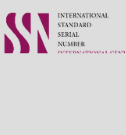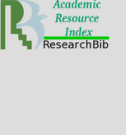Biosafety Biosecurity and Hospital Waste Management: Where do We Stand in Pakistan?
Keywords:
Biosafety, Biosecurity, Hospital Waste Management, Public Health, PakistanAbstract
The review explores the interconnected fields of biosafety, biosecurity and waste management emphasizing their critical roles in public health and environmental sustainability. Biosafety refers to measures preventing unintentional exposure to infectious agents, while biosecurity addresses the prevention of biological material misuse. Key elements include regulatory frameworks, advanced containment technologies, and international cooperation. Events like the COVID-19 pandemic and global initiatives such as polio eradication underscore the need for stringent biosafety and biosecurity measures, particularly in resource-limited settings like Pakistan. Emerging trends, such as synthetic biology and climate change, highlight evolving risks and necessitate updated protocols and governance. In parallel, waste management, especially hospital waste, is essential to mitigate risks to human health and ecosystems. Categories of waste range from general to hazardous, including infectious, radioactive, and e-waste. Current practices include waste segregation, recycling, incineration, and advanced disposal techniques. However, challenges such as plastic pollution, inadequate infrastructure, and insufficient public participation persist globally. Case studies from countries like Sweden and India demonstrate innovative solutions like waste-to-energy systems and national awareness campaigns. The review advocates for integrating sustainable practices like the circular economy into waste management and enhancing biosafety measures through education, investment, and policy reform. Specific attention is given to Pakistan's challenges and progress, emphasizing international collaboration to address disparities. Future directions include leveraging smart technologies, fostering community involvement, and promoting robust governance to ensure safety and sustainability. Overall, the review highlights the urgent need for a comprehensive approach to managing biological risks and waste, balancing technological advancements with ethical considerations and global equity to safeguard public health and the environment.
Downloads
References
. Zhou D, Song H, Wang J, Li Z, Xu S, Ji X, et al. Biosafety and biosecurity. J Biosaf Biosec. 2019;1(1):15-8.
. Sadia HS. Proper Hospital Waste Management for the Protection of Human Health and Environment: A Review. Health Syst Policy Res. 2020;7(1):86.
. Fatima G, Magomedova A, Parvez S. Biotechnology and Sustainable Development. Shineeks Publishers; 2024 Apr 14.
. Michalski A, Knap J, Bielawska-Drózd A, Bartoszcze M. Lessons learned from 2001-2021-from the bioterrorism to the pandemic era. Ann Agri Environment Med. 2022;29(1):1-11.
. Ta L, Gosa L, Nathanson DA. Biosafety and biohazards: understanding biosafety levels and meeting safety re-quirements of a biobank. Springer New York; 2019.
. Peng H, Bilal M, Iqbal HM. Improved biosafety and bi-osecurity measures and/or strategies to tackle laboratory-acquired infections and related risks. Int J Environmet Res Public Health. 2018;15(12):2697.
. Paris K. Genome Editing and Biological Weapons; As-sessing the risk of misuse. Published by Springer Cham. 2020; doi: 10.1007/978-3-031-21820-0.
. Oberste MS. Progress of polio eradication and contain-ment requirements after eradication. Transfusion. 2018;58(Suppl 3):3078-83. doi: 10.1111/trf.15018.
. Guan R, Pang H, Liang Y, Shao Z, Gao X, Xu D. Discov-ering trends and hotspots of biosafety and biosecurity re-search via machine learning. Brief Bioinfor. 2022;23(5):bbac194.
. Muneer S, Kayani HA, Ali K, Asif E, Zohra RR, Kabir F. Laboratory biosafety and biosecurity related education in Pakistan: Engaging students through the Socratic method of learning. J Biosaf Biosec. 2021;3(1):22-7.
. Khan T, Tanveer F, Muhammad J. Improving biosecurity in Pakistan: Current efforts, challenges, and recommendations on a multidimensional management strategy. Health Secur. 2021;19(3):254-61. doi: 10.1089/hs.2020.0050.
. Gao W, Wu Z, Zuo K, Xiang Q, Zhang L, Chen X, et al. From biosafety to national security: The evolution and challenges of biosafety laboratories. Laboratories. 2024;1(3):158-73.
. Wilson DC. Learning from the past to plan for the future: An historical review of the evolution of waste and resource management 1970–2020 and reflections on priorities 2020–2030–The perspective of an involved witness. Waste Managem Res. 2023;41(12):1754-813.
. Esmaeilian B, Wang B, Lewis K, Duarte F, Ratti C, Behdad S. The future of waste management in smart and sustainable cities: A review and concept paper. Waste Managem. 2018;81:177-95.
. Derhab N, Elkhwesky Z. A systematic and critical review of waste management in micro, small and medium-sized enterprises: future directions for theory and practice. Environ Sci Pollut Res Int. 2023;30(6):13920-44.
. Malav LC, Yadav KK, Gupta N, Kumar S, Sharma GK, Krishnan S, et al. A review on municipal solid waste as a renewable source for waste-to-energy project in India: Current practices, challenges, and future opportunities. J Cleaner Prod. 2020;277:123227.
. Qu J, Dai X, Hu HY, Huang X, Chen Z, Li T, et al. Emerging trends and prospects for municipal wastewater management in China. ACS ES&T Engineering. 2022;2(3):323-36.
. Alao MA, Popoola OM, Ayodele TR. Waste‐to‐energy nexus: An overview of technologies and implementation for sustainable development. Clean Energy Syst. 2022;3:100034.
. Kumari R. A Review of Swachh Bharat Abhiyan's Im-pact on India's Waste Management System. IAHRW Int J Soc Sci Rev. 2024;12(2):252-6.
. Lugo M, Ail SS, Castaldi MJ. Approaching a zero-waste strategy by reuse in New York City: Challenges and po-tential. Waste Managem Res. 2020;38(7):734-44.
. Wang J, Shen J, Ye D, Yan X, Zhang Y, Yang W, et al. Disinfection technology of hospital wastes and wastewater: Suggestions for disinfection strategy during coronavirus Disease 2019 (COVID-19) pandemic in Chi-na. Environ Pollut. 2020;262:114665.
. Singh N, Ogunseitan OA, Tang Y. Medical waste: Cur-rent challenges and future opportunities for sustainable management. Crit Rev Environ Sci Technol. 2022;52(11):2000-22.
. Hantoko D, Li X, Pariatamby A, Yoshikawa K, Horttan-ainen M, Yan M. Challenges and practices on waste man-agement and disposal during COVID-19 pandemic. J En-vironment managem. 2021;286:112140.
. Attrah M, Elmanadely A, Akter D, Rene ER. A review on medical waste management: treatment, recycling, and disposal options. Environments. 2022;9(11):146.
. Chisholm JM, Zamani R, Negm AM, Said N, Abdel dai-em MM, Dibaj M. Sustainable waste management of medical waste in African developing countries: A narra-tive review. Waste Manage Res. 2021;39(9):1149-63.
. Sadia A, Farid MU, Ghafoor A, Nasir Awan A, Maqsood U, Farid MZ. Effective management of hospital and medical waste in rural areas of Pakistan: A case study. Agro Biolog Records. 2020; doi: 10.47278/journal.abr/2020.018.
. Odonkor ST, Mahami T. Healthcare waste management in Ghanaian hospitals: Associated public health and envi-ronmental challenges. Waste Manage Res. 2020;38(8):831-9.
Downloads
Published
Issue
Section
Categories
License
Copyright (c) 2025 Open Access Journal

This work is licensed under a Creative Commons Attribution-NonCommercial 4.0 International License.



